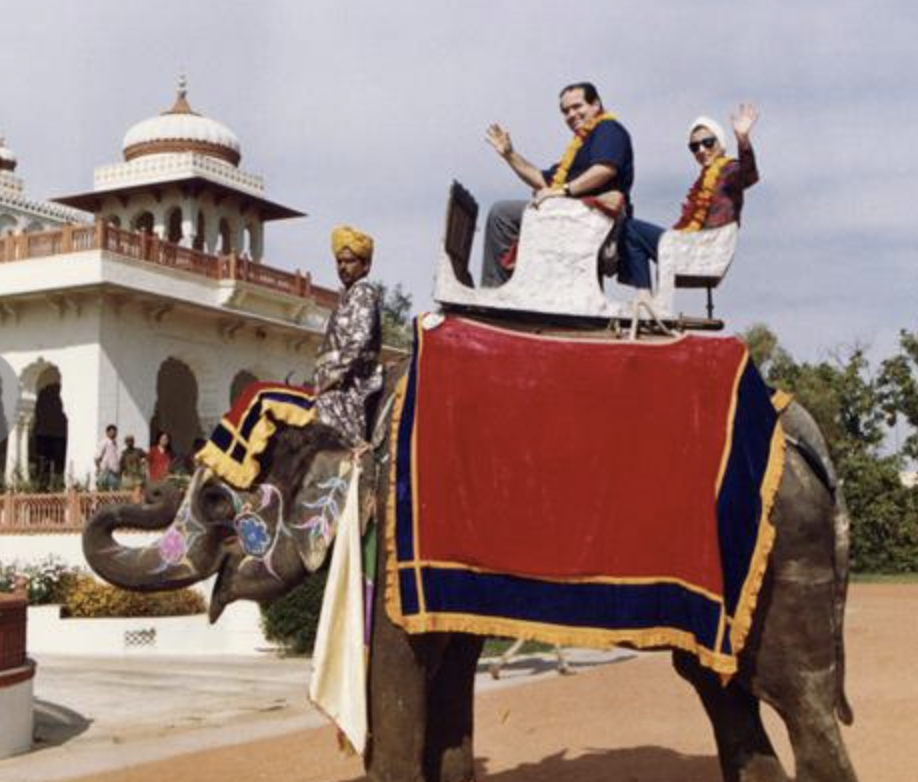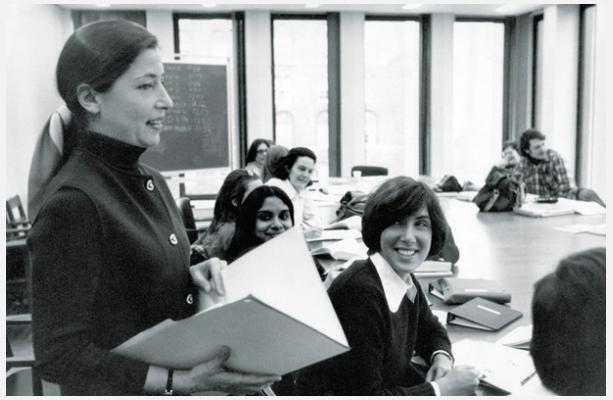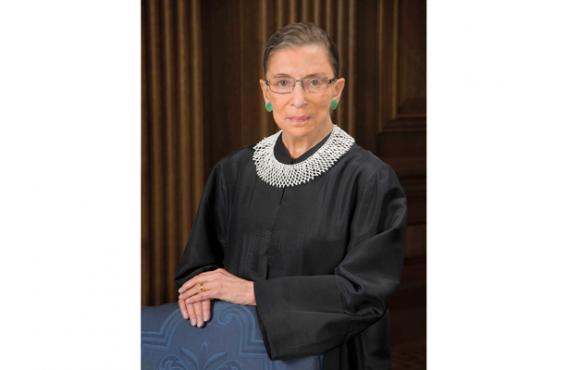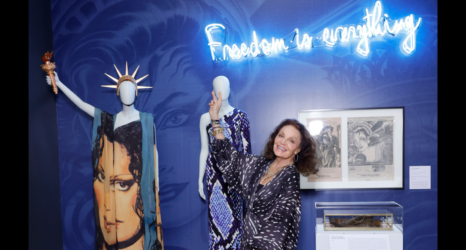“I’m not queen; I’d rather be Notorious.”

Notorious RBG: The Life and Times of Ruth Bader Ginsburg is the memoir that Ginsburg never wrote. The exhibit now at The New York Historical Society (Oct. 1, 2021–Jan. 23, 2022) is based on the popular best-selling book of the same name. Here her life story presented through objects—some everyday photographs and documents, some with historical significance and accompanied by media stations and gallery interactives—is a three-dimensional portrait that recreates her life in her time.
Ginsburg’s early life is re-imagined with scenes of familiar places: her childhood Brooklyn apartment and the kitchen she and her husband Martin “Marty” Ginsburg shared. (On display is his cooking whisk.)
Her school years and marriage are the stuff of happy ever after storybooks tales. On display are shared home movies of RBG with Marty on their honeymoon and in the early years of their marriage. RBG’s academic life spans from a paper that she wrote as an eighth grader exploring the relationship between the Ten Commandments, the Magna Carta, the Bill of Rights, the Declaration of Independence and the recently formed United Nations Charter, to yearbooks from Harvard, Columbia and Rutgers.
Setting the stage for the rest of RBG’s life of service, one wall panel, entitled “Things Women Couldn’t Do in the 1930s and 1940s,” reads:
- Practice law in most states, much less become a judge.
- Get paid the same amount as men for doing the same work.
- Answer want ads for jobs labeled “men only.”
- Attend most Ivy League universities.
- Serve on a jury in most states.
- Play school sports on an equal basis with boys.
- Open a bank account or get a credit card without a husband’s or male relative’s permission.
- Attend a military academy.
- Get pregnant without the threat of losing her job.
- In some states, own property without having a husband in control as “head and master.”
- Wear pants on the U.S. Senate floor.
- Serve in combat in the military.

The obstacles Ginsburg faced were shared by many American women in the workplace. Women did not have pregnancy coverage, and got lower pension benefits and pay. After a stellar career at Harvard Law School and Columbia, she was hired as a professor at Rutgers Law School in 1963 along with Eva Hanks.
But when they became two of only 14 women with tenure-track positions at law schools, media coverage included a story entitled “Robes for Two Ladies” that called them “slim” and “attractive” and commented that “from their youthful appearance they could easily be mistaken for students.”

Ginsburg’s decade at the American Civil Liberties Union is a history book of key moments in the women’s movement. With her perspective, facing institutional sexism both during her own struggle to find work and in the cases before her, she was well positioned to be an effective advocate.
A pivotal moment in her mid life was her appointment as a federal judge to the U.S. Court of Appeals for the District of Columbia Circuit on April 14, 1980 by President Jimmy Carter. Now on the other side of the bench from the cases she tried, she would be making law. This led to her role in more groundbreaking cases and her appointment to the Supreme Court by President Bill Clinton in 1993.

In this section of the exhibit, cases and law books, but also personal items like her robe and jabot from her Supreme Court wardrobe are featured. Visitors can picture being there in her presence, by standing beneath at the official portraits of RBG and Sandra Day O’Connor—the first two women to serve on the Supreme Court. Listening on their own devices to RBG’s delivery of oral arguments, majority opinions and forceful dissents in landmark Supreme Court cases, visitors can imagine hearing her impactful quotes in person.
RBG’s fiery record-breaking and quotable dissents from the Supreme Court bench on voting rights, affirmative action and workplace discrimination led to her new title as notorious, and to a slew of popular items from tee shirts to pins to celebrate a powerful and inspiring woman. Viewing RBG through personal photos and objects, with her recorded voice, expands what words in biographies, and even her essays in My Own Word cannot do.
For the NY Historical Society, the exhibit is a memory of RBG’s visit to the Museum in 2018 to officiate a naturalization ceremony of new citizens. For some of us, it is remembering seeing her at the Washington National Opera. For all of us, this exhibit is a chance to remember our shared experience of a remarkable woman who chose to work for what connects us all as citizens and women.
After its New York run, Notorious RBG: The Life and Times of RBG will travel to the Holocaust Museum Houston (March 2022) and the Capital Jewish Museum in Washington, D.C. (September 2022).
It’s been just over a year since Justice Ruth Bader Ginsburg died. On the latest episode of the Ms. podcast, host Michele Goodwin and guest Irin Carmon reckon with recent revelations and ask the important questions: How did Ginsburg’s death shape the current fight around abortion rights and other issues? Should she have retired? And what comes next at the Supreme Court?
Listen below:
Or head to the episode landing page for background reading, clips and a full transcript:
Up next:












